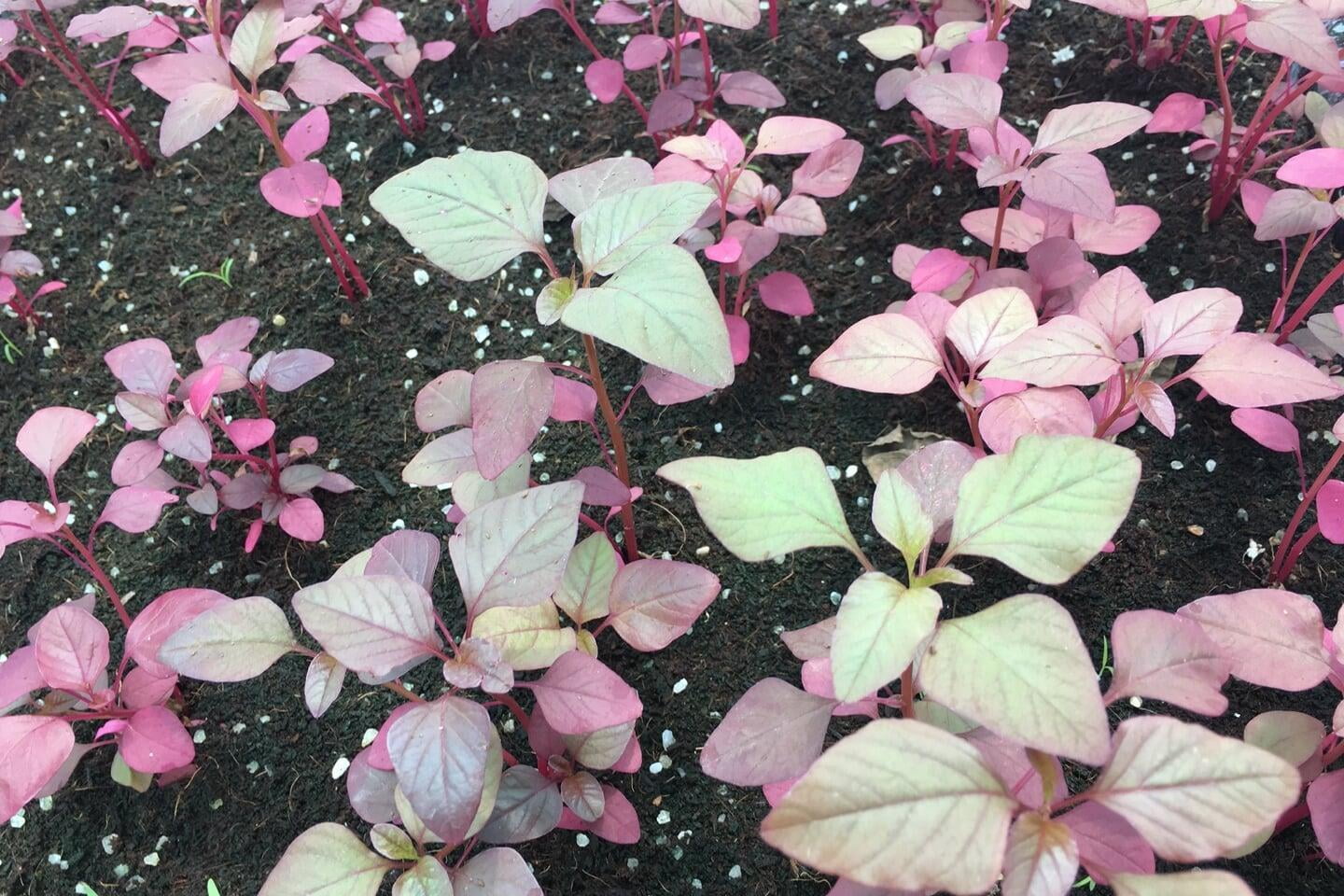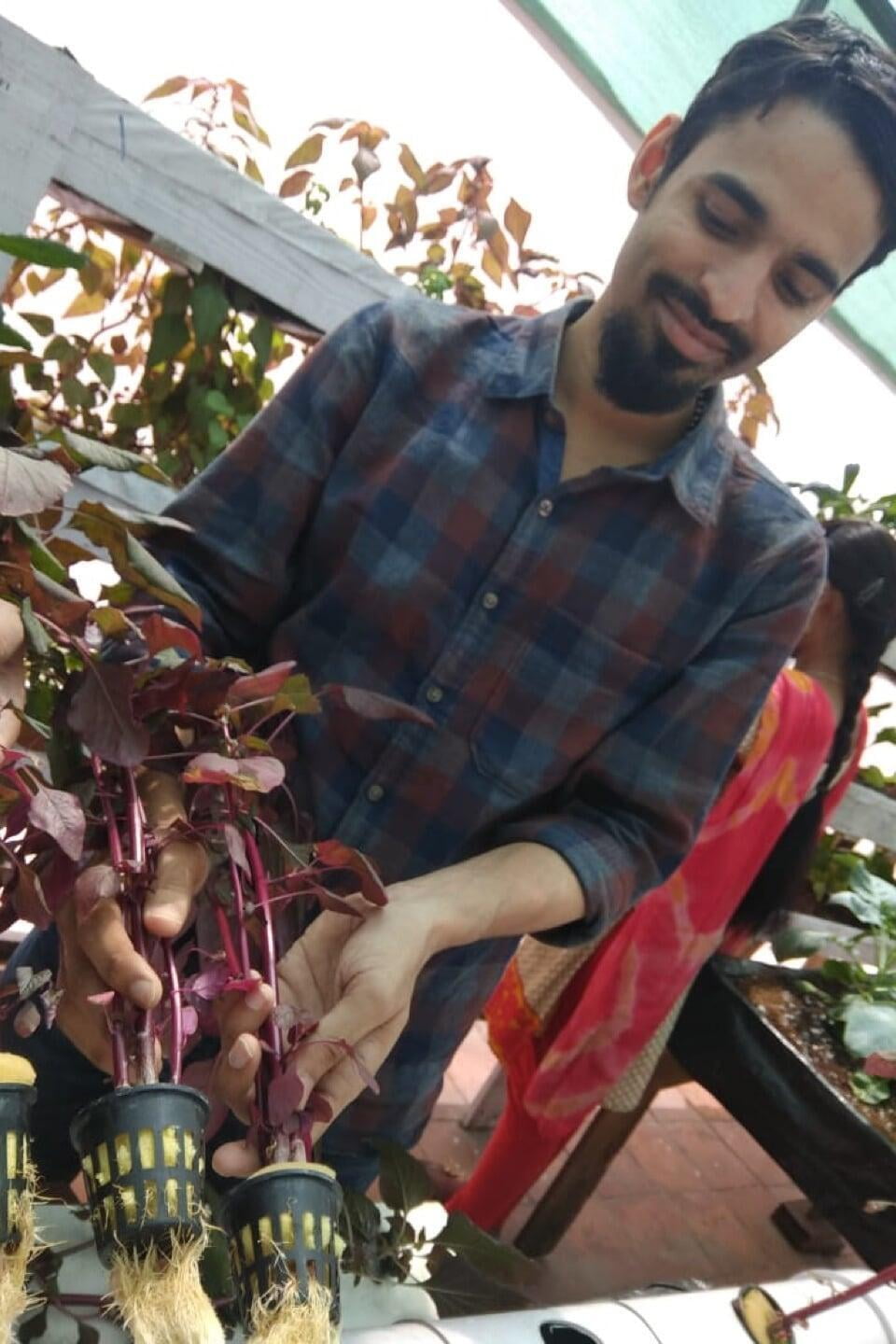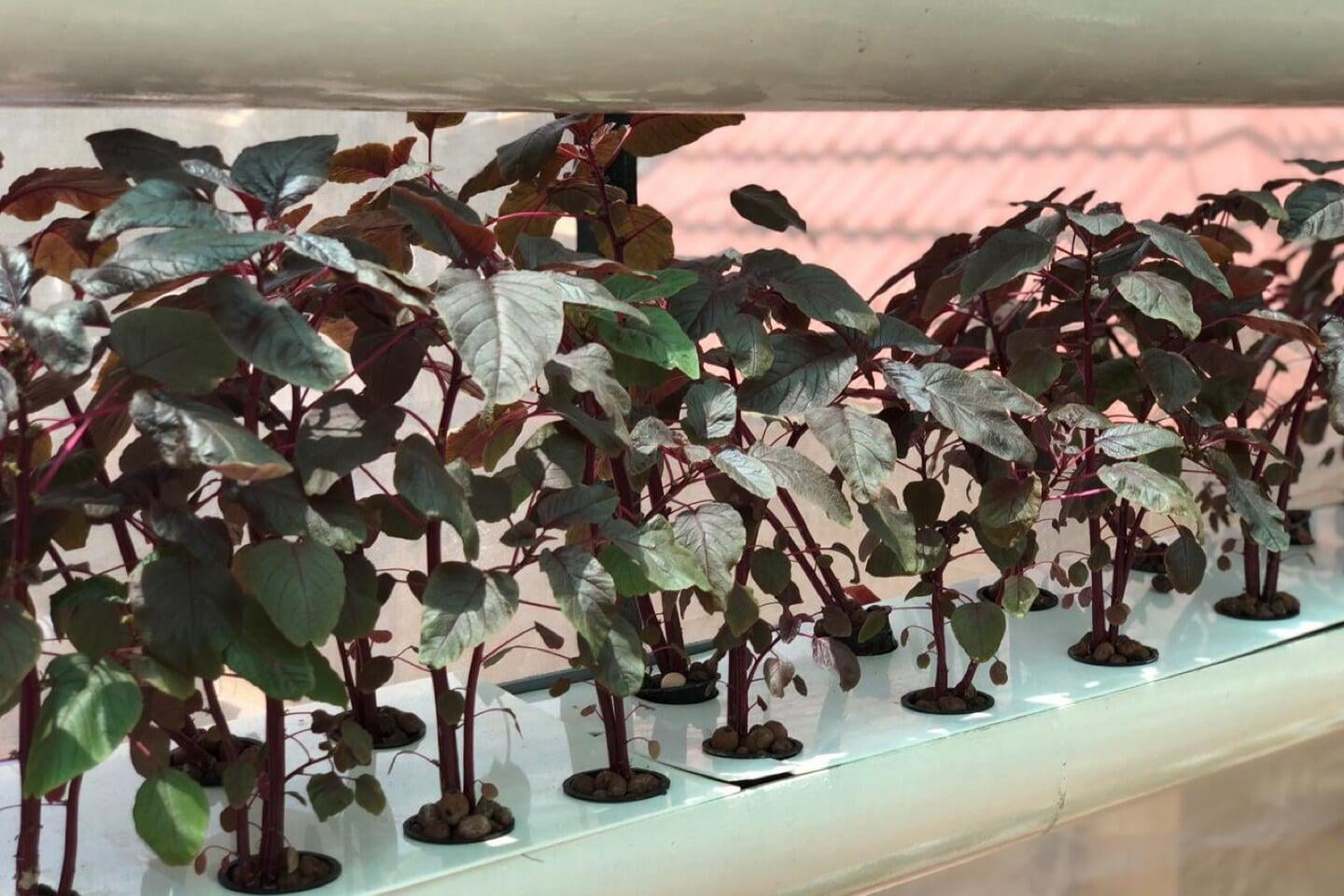We have been growing many leafy vegetables in our research centre, including mint, kale, coriander/cilantro, which we discussed in an earlier blog. Today we discuss one of my favorites - Amaranth (singular Amaranthus). Available in shades of green, red, or a mix of both - it a handy and simple ingredient with manifold benefits.
- Proteins
- Dietary Fibres
- Dietary Minerals
Amaranth is considered a complete protein (as it contains sufficient amounts of the amino acid Lysine). Young Amaranth leaves can be eaten in salads, while older, more mature leaves are better cooked. Cooked Amaranthus retains a high concentration of essential vitamins and minerals. Thus, Amaranthus is beneficial in any form- cooked and raw.
Growing Amaranth in Hydroponics
We have experimented growing Amaranth using each of the following mediums:
- Coco-peat
- Nutrient Film Technique (NFT)
- Deep Water Culture (DWC)
As long as conditions like temperature and humidity remain balanced, Amaranth can be harvested within 4-6 weeks. In all mediums, due to the harsh heat, we gave the plants a foliar spray of plain water as and when they looked too dry. Our results indicate that both NFT and DWC result in taller plants.
NFT
While growing in NFT, the seeds were first sown in pro-trays and then transplanted to DIY NFT channel made out of circular PVC pipes.
It took around 15 days to transplant the small sapling of Amaranth into the NFT channels. The NFT channels were provided with circulating nutrient-rich water for approximately 15 minutes, at two-hour intervals.
The image shows trainees from one of our Basic Hydroponics Training Course batch carrying out harvesting of Amaranth.
Word of caution
If you decide to make your own DIY NFT setup, make sure that instead of buying grey color PVC pipes (which are meant for carrying sewage/waste water), you use white/cream colour CPVC or UPVC pipes (which are meant for carrying drinking water). Also, try to use lead free pipes to be on the safer side.
DWC
Like in NFT, the seeds were first sown in pro-trays and then transplanted at around 15 days. We started with a dosage of 2 ml each of N, K, and P (in 1 liter of water) using CityGreens NPK combo pack.
When transplanting them, we used DWC channels of a capacity of approximately 40 to 45 liters of water. Aeration was provided every alternate day.


